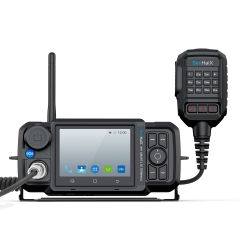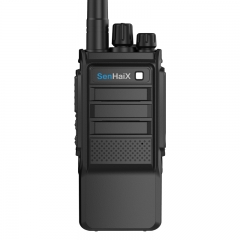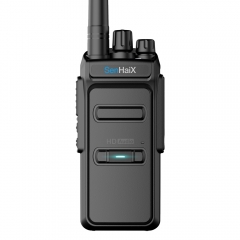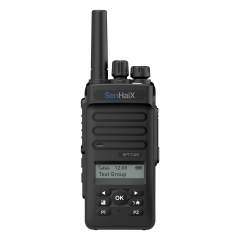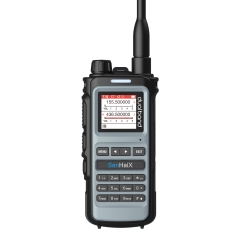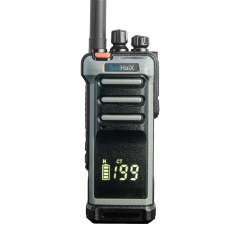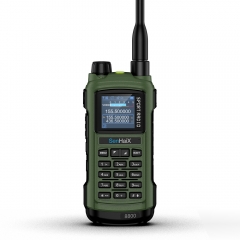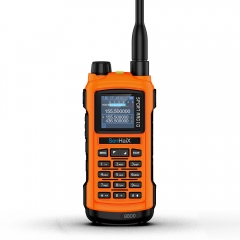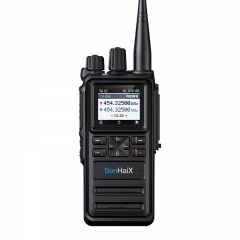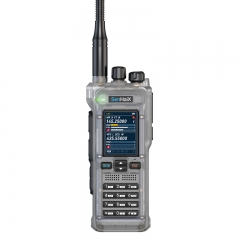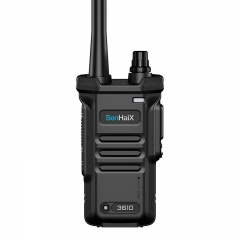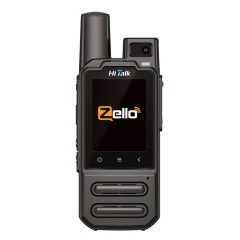Operation precautions:
1, When the walkie-talkie is being launched, keep the walkie-talkie in a vertical position, and keep the distance between the microphone and the mouth 2.5-5 cm. When launched, the radio should be at least 2.5 cm away from the head or body.
2, Do not turn on and off the action many times during use, and adjust the volume to the volume suitable for your hearing. Walkie-talkie use safety precautions :1, in a car with an airbag, do not put the walkie-talkie in the range that may be involved when the airbag is deployed. If the walkie-talkie is in the area that may be involved when the airbag is deployed, once the airbag is rapidly deployed, the walkie-talkie may injure the person in the car with great impact.
3, In the atmospheric environment or occasion of potential explosion, unless the two way radio is a special certification explosion-proof radio, it must be turned off. Electrical sparks can cause an explosion or fire in potentially explosive atmospheres.
4, Do not replace the battery or charge the battery in a potentially explosive atmospheric environment. Installing and removing the battery may cause contact sparks and cause an explosion.
5. Turn off the intercom before approaching the blasting area and the area where the detonator is located, so as not to cause possible explosions.
Routine maintenance:
1. After long-term use of the walkie-talkie, it is easy to get dirty by pressing the key, control knob and housing. Please remove the control knob from the two way radio and clean the housing with neutral detergent (do not use highly corrosive chemicals) and wet cloth. The use of chemicals such as decontamination agents, alcohol, sprays or petroleum preparations can cause damage to the surface and housing of the walkie-talkie.
2, Gently handle the walkie-talkie, do not move antenna with hand.
3, Do not use headphones and other accessories, please cover the dust cover (if equipped). In the professional wireless communication, there is no "distance" this technical parameter, because the radio relies on electromagnetic waves to spread signals, can affect the wireless signal can spread long distance factors are very many, among which the internal influencing factors include the transmission power of the equipment, receiving sensitivity, antenna gain and height. External factors include the use of environment, air interference waves and so on. Although the radio metering distance is difficult to speak clearly, however, we will still never low by a common concern about this issue, this shop is a professional radio manufacturer, comprehensive years of customer feedback and their own testing experience, obtained a general radio effective distance range, for your reference:
1, Handheld radio 5 W /4 W transmission power: 1-3 km in the urban areas, 3-5 km in the open areas; 3 W /2 W transmission power: 500 m -2 km in urban areas, 1-3 km in open areas;
2, Mobile radio 50W / 40W transmission power: 5-15km in urban areas, 10-25km in open areas; 25W / 20W transmission power: 3-10km in urban areas, 5-15km in open areas; 10 W /5 W transmission power: 1-5 km in urban areas, 3-8 km in open areas.
3, Shortwave radio distance is very far, the external environmental factors support the case, can be cross-provincial or even transnational communication, but shortwave walkie-talkie needs more than 3 amateur radio operation certificate, otherwise considered illegal operation.
4, The cluster walkie-talkie distance is very far, the basic city-wide communication, generally used for public security network, the need for high cluster networking costs.
5. The cost of the trunk station is relatively high, but the hand-held walkie-talkie and the car walkie-talkie can increase the effective communication distance through the trunk.


















